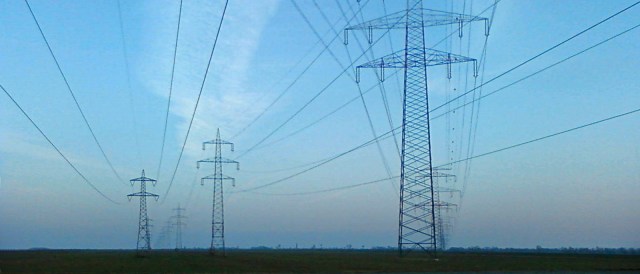CSU party leader and Bavarian Minister-President Horst Seehofer’s sudden about-face on Südlink, the planned long-distance transmission corridor for renewable energy running through his state, is little more than political pandering to cosmetic concerns without accounting for long-term needs.

Energy policy bungling in Bavaria. (Photo by M.Dufek, CC BY-SA 3.0)
The revamp of Germany’s clean energy transition, or energiewende, is hardly off to a flying start, something the new grand coalition in Berlin had been counting on. It had even created a new energy authority within the powerful economic planning ministry, now called the Ministry of Economic Affairs and Energy, to expedite the process. But reforms are plodding along, still without specifics on the raft of pressing agenda issues.
The last thing the new government needed was Bavaria kicking up a fuss about Südlink, the long-distance transmission corridor that will run from the North Sea coast to Bavaria’s industrial heartland. At the center of this tiff is Bavaria’s Minister-President Horst Seehofer, also leader of the CSU (a sister party of Merkel’s Christian Democrats), who set off the brouhaha by stating brazenly that northern Bavaria was not going to accept the route of the planned “transmission highway,” agreed upon by the Federal Network Authority and the previous German government, of which Seehofer was a prominent member. (Indeed, he explicitly voted for it.)
Although there’s plenty of NIMBY opposition to the different stretches of the transmission system, no one expected this kind of a “Nein!” to come from Bavaria – not even Bavaria’s very own state administration, which not so long ago had called for an even bigger corridor [DE]. After all, it’s Bavaria that’s going to benefit. Less than a year ago, Seehofer himself deemed the new corridors necessary for making the energiewende work. There’s no disagreement that the corridor will be necessary when the nuclear reactors – currently generating half of Bavaria’s electricity – go offline in 2023. In fact, Südlink is considered one of the most important grid expansion projects in Europe.
But Seehofer himself is no longer a member of the federal government. He’s head of one of Germany’s 16 states. His U-turn is hypocritical and short-sighted, but it reflects local opposition in northern Bavaria where the transmission system’s pylons will cut through forests and localities. In fact, there’s opposition pretty much everywhere the corridor will deface local landscapes.
Bavaria’s sudden opposition has been roundly criticized – from Chancellor Merkel to the Munich-based Süddeutsche Zeitung. But this is the kind of protest that the energiewende is increasingly facing: opposition to change, to the status quo. Germany is switching its means of energy generation, which implies changes across the board – to landscapes, architecture, urban development, transportation, and more. The challenges are no longer primarily technical, but societal, and new methods and mechanisms are going to have to be developed to address them.
Of course, including citizens in the decision-making processes is crucial, as is politicians like Seehofer exhibiting leadership and explaining to localities why changes like the transmission corridors are necessary. Playing politics before upcoming local elections as Seehofer is doing serves no one’s long-term interests – least of all Bavaria’s.
Paul Hockenos is a Berlin-based journalist and author of the Going Renewable blog, where this post was first published.
[…] 2014/03/13: GET: Seehofer Shifts on Südlink […]